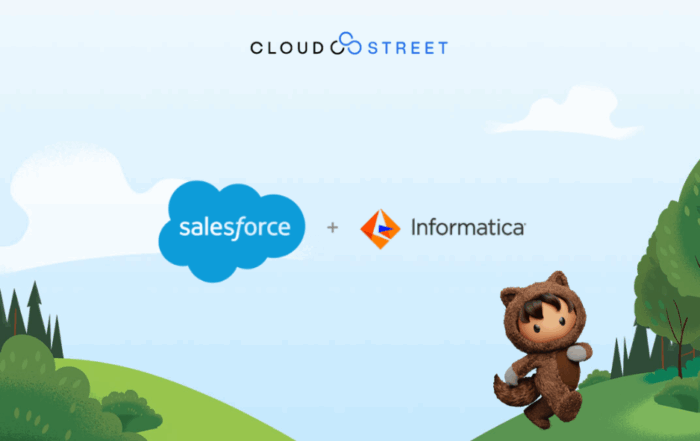CX vs DCX? Complete List of Customer Experience Terms You Need to Know Now!

Core concepts in business management include the central principle of dedication to delivering an excellent overall customer experience (CX). That’s the unavoidable imperative of every for-profit organization. It’s the driving force of financial sustainability for a company, so there is no other priority equal to it. The information below, complements of Cloudstreet, will help you increase your mastery of customer experience management. Familiarize yourself with this list of terms to help in analyzing and strategizing to improve your brand’s CX.
The Customer Experience
To say that effective CX management gives companies a competitive edge is understating the matter. It is more fair to say that it is the driver of success for those who master it and the ruin of those that neglect it. Industrial and commercial sales and service leaders should understand the complex concepts involved in producing the ideal customer experience for patrons of their brands. That includes learning the professional terminology that conveys those concepts.
Which Key CX Terms Do I Need to Know?
Consumers now have many rapidly accessible options at their fingertips. Plus, they are web-savvy digital natives, raised in the world of virtual commerce. So, business leaders must strategize to achieve increasingly customer-centric operations and internal cultures that generate an ever deeper understanding of and higher quality of customer experience.
Here are many of the basic to advanced strategic concepts that are essential for effective customer experience management:
Customer Satisfaction
This metric gauges how successful your customer finds your products or services in terms of meeting his/her needs and preferences. It measures their level of approval based on their expectations of how the product or service should perform.
Customer Experience (CX)
This is the term for the customer’s generally positive or negative sense of what it has been like for them in dealing with your company. It blends all the customer’s impressions of the goods and services he/she has received from your organization and of contacts to and from your team.
Customer Experience Management (CXM)
CXM is the active effort to control CX by monitoring satisfaction metrics, among others, and strategizing and implementing technologies, processes, practices, and/or policies to optimize all interactions with the brand’s team, communications channels, products, and services.
Customer Experience Program
A CX program is an organized system a business uses for managing customer interactions and overall experience quality, measuring satisfaction rates, analyzing program performance, and designing and implementing CX improvement strategies.
Digital Customer Experience (DCX)
This is the customer’s overall impression of his/her time dealing with your company through online channels, like your website, mobile app, email, or social platforms.
Voice of the Customer (VoC)
The VoC is information obtained from customer feedback expressed about their impressions of a company, its products, and/or services. Business decision-makers can use this feedback to make decisions on needed changes to improve the CX quality.
Customer Journey
This progression is the entire sequence of individual experiences a customer has with your company via all channels throughout the lifecycle of the customer relationship.
Customer Analytics
These tools produce a variety of analyses based on interpretations of internal data and external consumer data. The analyses enable business leaders to develop better-informed CX optimization strategies.
Customer Insights
This is customer feedback that yields valuable information about target market needs, desires, and behaviors that help business strategists create plans for improving the customer experience.
Customer Satisfaction Score (CSAT)
This rating gauges a customer’s level of satisfaction with your products, services, or interpersonal interactions with your staff. For example, the rating may be 1-5, with 1 being a very low rating and 5 being a very high one.
Customer Experience Design (CXD)
CXD is creating customer interactions involving modalities to provide smoother, more positive experiences for customers. It typically utilizes customer journey mapping for visualization of their experience of interactions from the top of the funnel to long-term customer support.
Customer Relationship Management (CRM)
A CRM system refers to both a company’s sales and customer service practices and its software platform for nurturing relationships with prospects and customers throughout the customer lifecycle. (A CRM platform typically integrates departmental data silos.)
Churn Rate
The churn rate is the ratio of customers who quit doing business with a company instead of continuing with repeated purchasing over a specified period. This is a key performance metric for helping determine customer satisfaction levels.
Retention Rate
This is the ratio of customers who make repeat purchases from a business compared to the total customer base, which includes one-time purchasers. The metric is used to develop strategies for reducing customer attrition (churn) by fostering loyalty.
Customer Effort Score (CES)
This metric gauges the level of ease with which customers engage with the company’s team, products, or services. The emphasis is on tasks and problem-solving involved for customers of your business. People rate the level of effort they must expend as your customer.
Net Promoter Score (NPS)
This scoring tracks customer satisfaction and retention (loyalty). It quantifies the customer’s likelihood of recommending your business to their acquaintances.
Transactional Net Promoter Score
This is a detailed version of the NPS that quantifies customer satisfaction and loyalty. The calculations are grounded in data from particular interactions.
Omnichannel Communications
An important feature of customer experience optimization is enabling customers to communicate by their preferred channels. Omnichannel operations integrate brick-and-mortar stores, online sales sites, mobile apps, call centers, social platforms, etc., for users.
Customer Lifetime Value (CLV)
The CLV is a key metric for understanding the rationale for investment in areas of revenue generation and the long-range costs of customer attrition. CLV estimates the total amount of net profit to be realized over the full term of the customer relationship.
Customer Persona
To craft marketing strategies to appeal to prospective customers with particular needs, interests, and goals. The persona helps the marketer better relate their content and general outreach initiatives to the motivations of professionals who match the type.
Customer Onboarding
This is the introductory guidance provided to customers to help them acclimate as quickly as possible to the steps for using a company’s product or service. This process contributes to higher customer satisfaction and retention rates.
Customer Satisfaction Index (CSI)
The CSI is an indicator of customer satisfaction with your products, services, or your company overall. The index is usually calculated as an aggregate of survey data used to quantify satisfaction across the customer base by generating a score.
Customer Segmentation
This analytic strategy groups customer profiles based on various data for purposes of customizing marketing messaging, product and service package pricing, and, ultimately, the overall customer experience.
Customer Success
This obvious-seeming term is arguably the conceptually deepest in the CX glossary. It refers to the mission of customer-centric businesses, which are driven by a sense of commitment to achieving results that contribute to the customer’s success.
Brand Advocate
Some customers go beyond repeat purchasing and demonstrate their loyalty by promoting a company they like to other consumers. They can be highly effective influencers who can be instrumental in the growth of the brands they support.
Customer Feedback Mechanisms
These are technologies and procedures for gathering and responding to customer input and increasing satisfaction rates. They can include surveys, star ratings, website monitoring, customer portal options, social site comments, complaint forms, customer service tickets, response programs, and improvement initiatives.
Customer Journey Orchestration
Customer journey analytics are used by specialists to optimize the overall customer experience by literally organizing and tailoring the interactions in the series that constitute the customer journey.
Customer Empowerment
This is a new CX concept for freeing customers to take greater control of their journey with a company. From various web resources to policy modifications, businesses can convey autonomy to customers through self-service features and expanded information access.
Customer Engagement
This measure attempts to quantify the customer’s level of interaction with your company, including responses to communications, participation in opportunities offered, promoting the brand, etc.
Customer Experience Analytics
CX analytics interpret B2B or B2C customer experience data associated with interpersonal interactions between the customer and your team, products, and technologies, to inform management decision-making.
Customer-Centric Product and Service Design
A more customer-engaged product development methodology is increasingly popular among forward-thinking manufacturing leaders. Collaborative iteration processes benefit customers with solutions that better suit their needs.
Customer-Generated Content (CGC)
CGC is free organic marketing content authored by customers who promote the brand because they have had a good experience with it. Testimonials, reviews, and social platform posts are forms of CGC.
CX Vocabulary Linked to Customer Satisfaction
The customer experience naturally encompasses everything that matters to your target audience. That includes product quality, prompt response, effective problem-solving, excellent communications management, and other experiential factors throughout the customer lifecycle. Studying the handy glossary of the terms above is the first step to adequate self-education for professionals who need a deeper understanding of CX management.
CloudStreet Information Resource
CloudStreet is a Salesforce implementation partner serving B2B stores for manufacturers, industrial and consumer goods suppliers, among others. The most successful manufacturers, consumer goods producers, IT SLA contractors, and others use powerful tools like Salesforce to overcome customer experience challenges. CloudStreet offers Accelerators to launch your online customer experience rapidly, complete with custom customer portals, and quickly boost current sales and drive new sales.
Discover insights that drive results - explore out latest blog posts now
Salesforce Data Cloud vs. Informatica Intelligent Data Management Cloud: A Comparative Analysis
Salesforce Data Cloud vs. Informatica Intelligent Data Management Cloud: [...]
Unlocking B2B Success with Salesforce Experience Cloud
Unlocking B2B Success with Salesforce Experience Cloud In today’s [...]
Future-Ready: How AI is Shaping the Mid-Market Manufacturing Landscape
Future-Ready: How AI is Shaping the Mid-Market Manufacturing Landscape [...]


